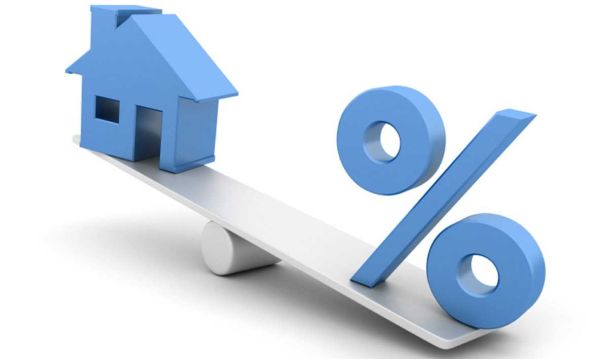
For much of this year, mortgage rates had been steadily climbing higher, reaching levels not seen in more than a decade. But these past few weeks have offered a bit of a reprieve.
According to the latest data released Thursday by Freddie Mac, the 30-year fixed-rate average dropped to its lowest level in five weeks, falling to 5.1 percent with an average 0.9 point. (A point is a fee paid to a lender equal to 1 percent of the loan amount. It is in addition to the interest rate.) It was 5.25 percent a week ago and 2.95 percent a year ago.
Freddie Mac, the federally chartered mortgage investor, aggregates rates from around 80 lenders across the country to come up with weekly national averages. The survey is based on home purchase mortgages. Rates for refinances may be different. It uses rates for high-quality borrowers with strong credit scores and large down payments. Because of the criteria, these rates are not available to every borrower.
The 15-year fixed-rate average slid to 4.31 percent with an average 0.8 point. It was 4.43 percent a week ago and 2.27 percent a year ago. The five-year adjustable rate average rose to 4.2 percent with an average 0.3 point. It was 4.08 percent a week ago and 2.59 percent a year ago.
“The Freddie Mac fixed rate for a 30-year mortgage fell for the second week in a row, following Tuesday morning’s sharp dip in the 10-year Treasury,” Joel Berner, senior economic research analyst at Realtor.com, wrote in an email. “Yields quickly fell 14 basis points from the day’s open and have hovered around 2.75 percent since. Investors taking part in the stock market sell-off of the past five weeks have shifted their attention to the debt market, driving up prices on T-bills and mortgage-backed securities. This allowed mortgage rates to fall, even amid inflation-cooling policies initiated by the Federal Reserve.”
Mortgage rates have skyrocketed this year, outracing expectations. The 30-year fixed average went from 3.22 percent at the start of the year to 5.3 percent earlier this month, the fastest gain since 1994, according to Freddie Mac.
With inflation running at 40-year highs, the Federal Reserve’s aggressive moves to rein it in have put upward pressure on mortgage rates. Earlier this month, the central bank raised its federal funds rate by a half-percentage point, the sharpest increase since 2000. The Fed’s minutes from that meeting, which were released this week, indicate two more hikes of a half-percentage point each are expected when it meets in June and July.
Investors, who had been selling bonds over concerns about inflation and tighter monetary policy from the Fed, lately have been putting their money into Treasurys and mortgage-backed securities now that the stock market is swooning. The yield on the 10-year Treasury, which rose to a four-year high earlier this month when it hit 3.12 percent, fell to 2.75 percent on Wednesday, its lowest level since mid-April. Yields move inversely to prices. Because mortgage rates tend to follow the same path as long-term bond yields, they too have dipped.
“A lot of turmoil in the equity markets lately,” said Ken H. Johnson, a real estate economist at Florida Atlantic University. “This is driving a lot of capital to the temporary safety and shelter of 10-year Treasury notes. As their prices rise, in response to the increased temporary demand, yields are falling slightly. The correlation between 10-year Treasurys and mortgage rates is still strong.”
Bankrate.com, which puts out a weekly mortgage rate trend index, found the experts it surveyed divided on where rates are headed in the coming week. Thirty-eight percent said they would go up, another 38 percent said they would go down and 25 percent said they would remain about the same.
Michael Becker, branch manager at Sierra Pacific Mortgage, expects slightly lower rates in the near term.
“Mortgage rates have continued their rally over the last two weeks,” Becker said. “Today we are looking at the best rates in about a month. Over the last few weeks as stocks continued their sell-off, bonds have benefited by the [flight-to-safety] bid. This is much different than earlier this year when bonds and equities both sold off.”
However, Dick Lepre, loan agent at Crosscountry Mortgage, predicts they will rise.
“No one has any idea of where the economy is headed,” Lepre said. “People are uncertain about inflation, GDP and even housing. Over this year, and most of next, Treasury yields and mortgage rates will continue higher. Inflation is the culprit.”
Meanwhile, mortgage applications fell again last week. The market composite index – a measure of total loan application volume – decreased 1.2 percent from a week earlier, according to Mortgage Bankers Association data.
The refinance index was down 4 percent from the previous week and was 75 percent lower than a year ago. The purchase index was flat, ticking up 0.2 percent. The refinance share of mortgage activity accounted for 32.3 percent of applications.
“Refinance activity has fallen 66 percent since January 2022, when rates were nearly 2 percentage points lower than they are today,” Bob Broeksmit, MBA’s president and chief executive, wrote in an email. “Many prospective homebuyers are feeling the effects of swift home-price appreciation, higher mortgage rates, and too few listings in their price range – especially at the lower end of the market. There are signs that inventory for new and existing homes is starting to increase, which should slow price growth and give home shoppers more options.”
(c) 2022, The Washington Post · Kathy Orton











